Crew trains in US, Russia and Kazakhstan; Zvezda Service Module on track for July 2000 launch
Activities to prepare for the first expedition crew to take up residency aboard the International Space Station (ISS) ramped up in May 2000, with just five months remaining until the beginning of permanent human habitation in low Earth orbit. The Expedition 1 crew of Commander William M. Shepherd, Flight Engineer Sergei K. Krikalev, and Soyuz Commander Yuri P. Gidzenko and their backups Kenneth D. Bowersox, Mikhail V. Tyurin and Vladimir N. Dezhurov continued training, dividing their time between Russia and the United States. Crewmembers from upcoming Shuttle assembly and resupply missions conducted joint training with the Expedition 1 crew who also spent time familiarizing themselves with the Russian-built Zvezda Service Module (SM), the next ISS element undergoing preparation at the Baikonur Cosmodrome in Kazakhstan for its planned mid-July 2000 launch.
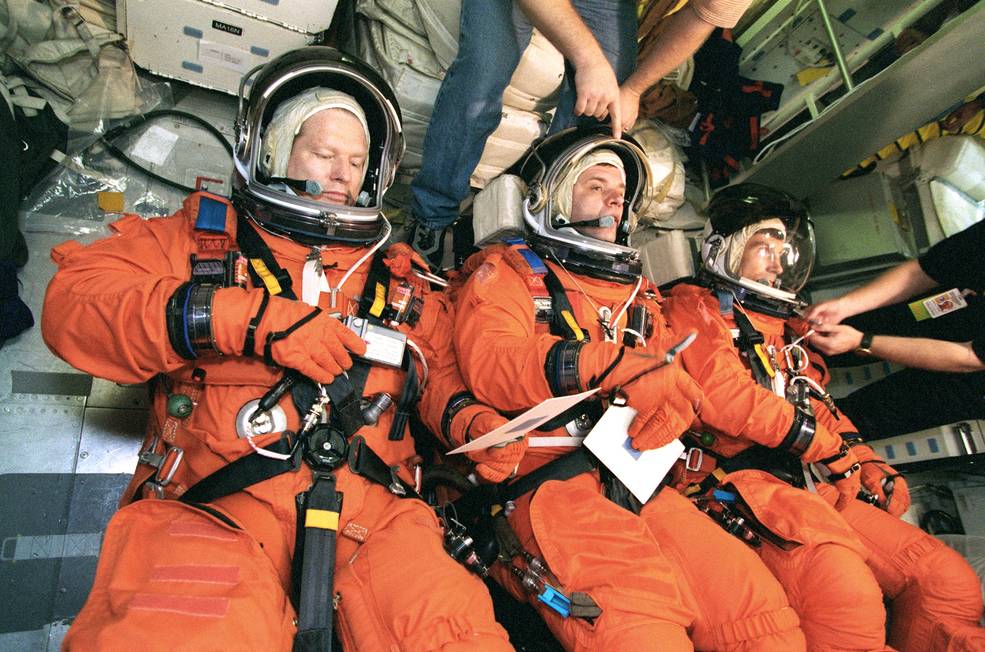
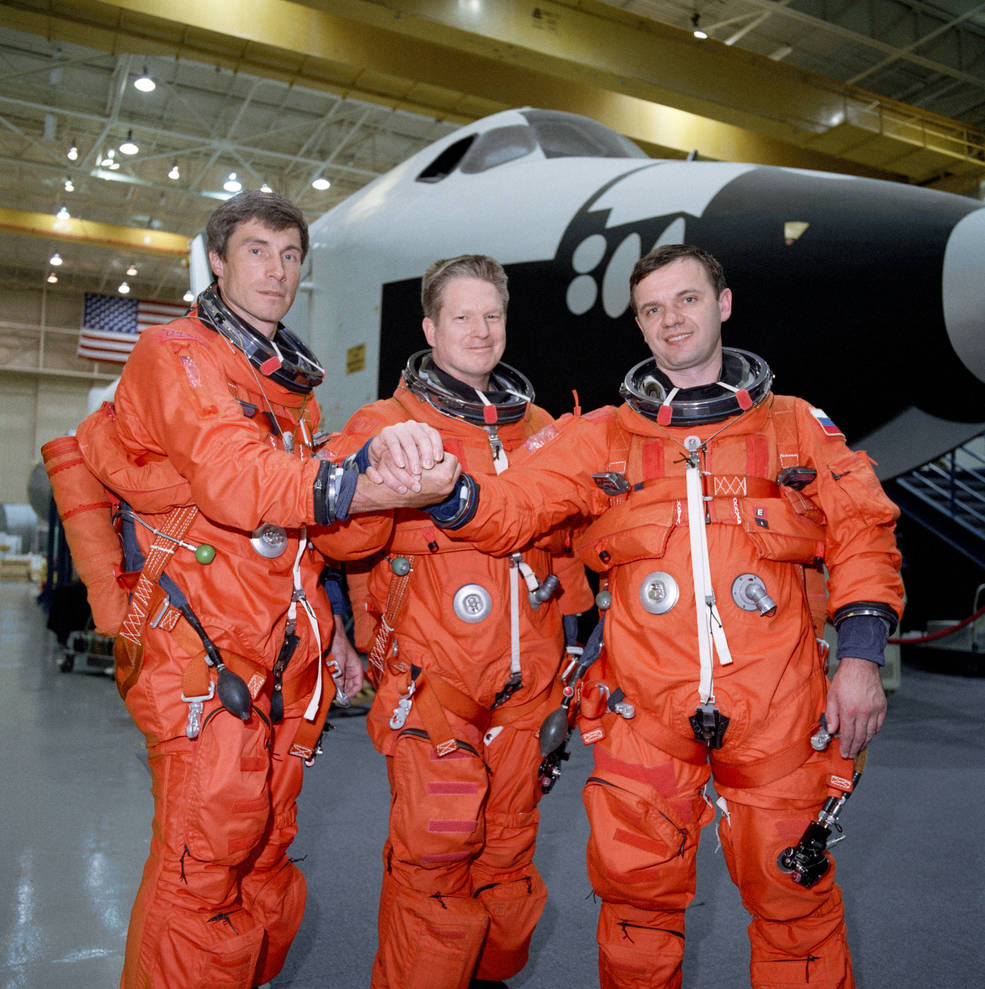
Left: Expedition 1 crewmembers (left to right) Shepherd, Gidzenko and
Krikalev in the Shuttle trainer during deorbit prep training.
Right: Expedition 1 crew (left to right) Krikalev, Shepherd and Gidzenko.
After a successful session in April at the Gagarin Cosmonaut Training Center (GCTC) outside Moscow, all six crewmembers returned to the Johnson Space Center (JSC) in Houston for three weeks of joint training beginning May 1. They completed training and simulations for Shuttle assembly missions planned to occur during their mission, such as the STS-97/4A assembly mission bringing the P6 truss segment and the first set of US solar arrays to the station and the STS-98/5A mission delivering the Destiny US Laboratory module. Since the Expedition 1 crew planned to return to Earth aboard STS-102 at the end of their four-month mission, they spent time learning about Shuttle systems and procedures for deorbit and reentry. They completed that session in the Shuttle 1-G trainer and practiced donning the Launch and Entry Suits and securing themselves into the recumbent seats that minimized the g-loads during return to Earth’s gravity. To prepare for any possible maintenance or repairs to be conducted on the outside of the ISS during their mission, Shepherd, Gidzenko and Krikalev completed an underwater Extravehicular Activity (EVA) or spacewalk training session in the Neutral Buoyancy Laboratory (NBL), with Shepherd wearing a US Extravehicular Mobility Unit (EMU) spacesuit and Gidzenko and Krikalev wearing Russian Orlan suits.
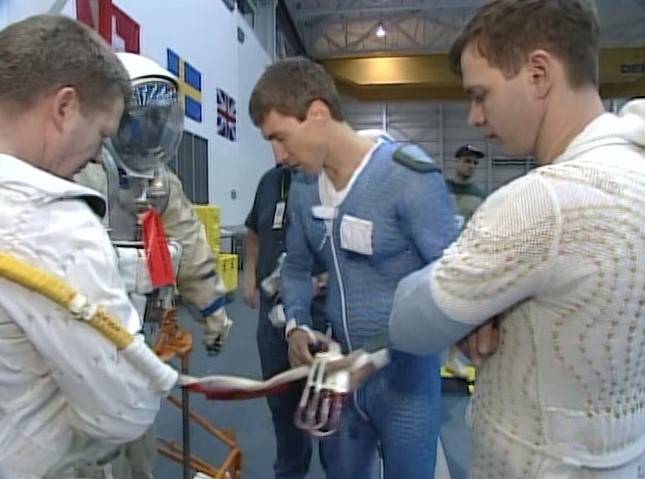
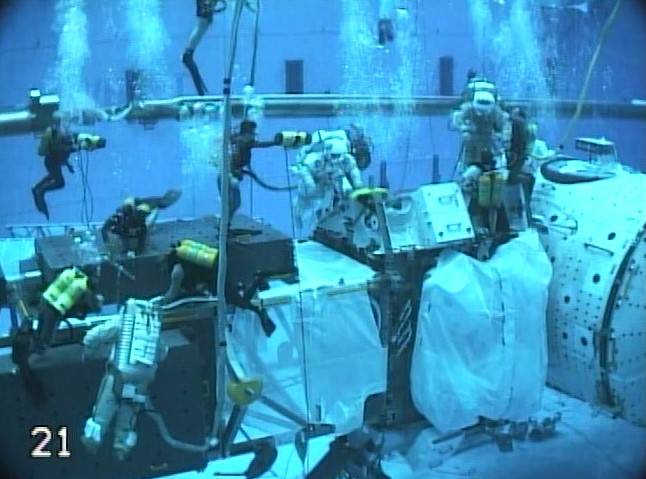
Left: Expedition 1 crewmembers (left to right) Shepherd, Krikalev and
Gidzenko suiting up for a training exercise in the NBL. Right: Expedition 1
crewmembers (left to right) Gidzenko, Shepherd and Krikalev during
the NBL run, assisted by scuba divers.
The crewmembers returned to Russia May 19 for a month-long training session. In addition to activities at GCTC, first the backup crew on May 22 followed by the prime crew two days later traveled to Baikonur for the Zvezda module Crew Equipment Interface Test (CEIT) in the Cosmodrome’s Area 254 where Russian engineers continued to prepare the element for its July launch. The CEIT allowed the crew to inspect the module and its onboard equipment as close to launch as possible. Four crewmembers, Edward T. “Ed” Lu, Daniel C. Burbank, Yuri I. Malenchenko and Boris V. Morukov, from the upcoming STS-106/2A.2b mission to outfit and resupply Zvezda once in orbit, also participated in the CEIT. Two additional cosmonauts, the so-called Expedition 0 crew of Gennadi I. Padalka and Nikolai M. Budarin, also participated. Padalka and Budarin were a standby crew that, in case the automatic docking of Zvezda with ISS were to fail, would launch aboard a Soyuz spacecraft and dock with the module, and from inside use the TORU manual rendezvous system to execute the docking. After about 10 days spent checking out Zvezda’s systems, they would return to Earth.
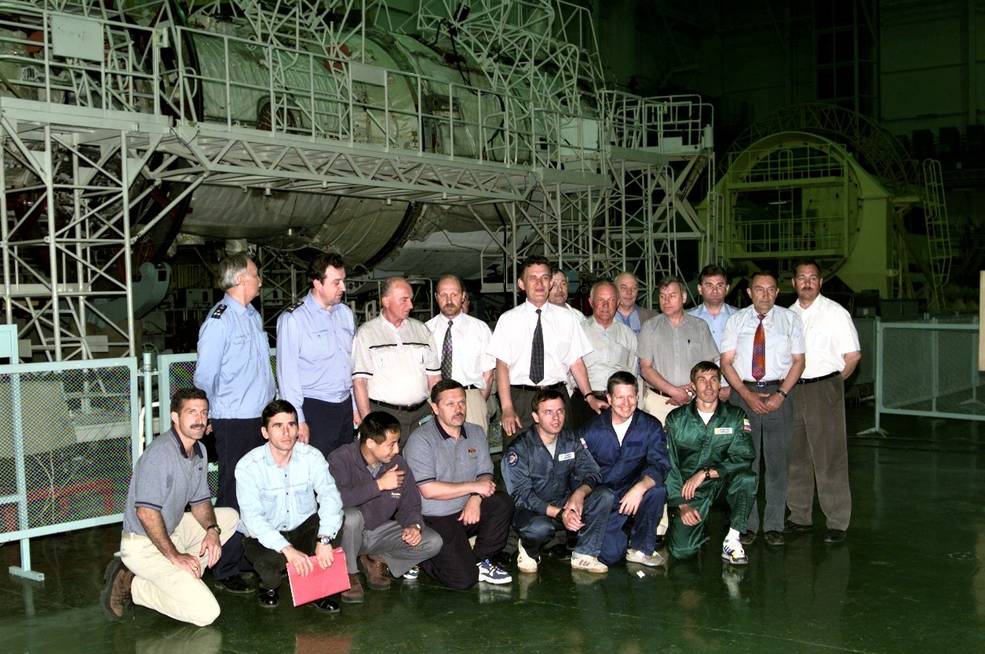
Group photo at the Zvezda CEIT in Baikonur. Front row, kneeling left to right:
Burbank, Malenchenko, Lu, Morukov, Gidzenko, Shepherd and Krikalev.
Back row are Russian officials and engineers.
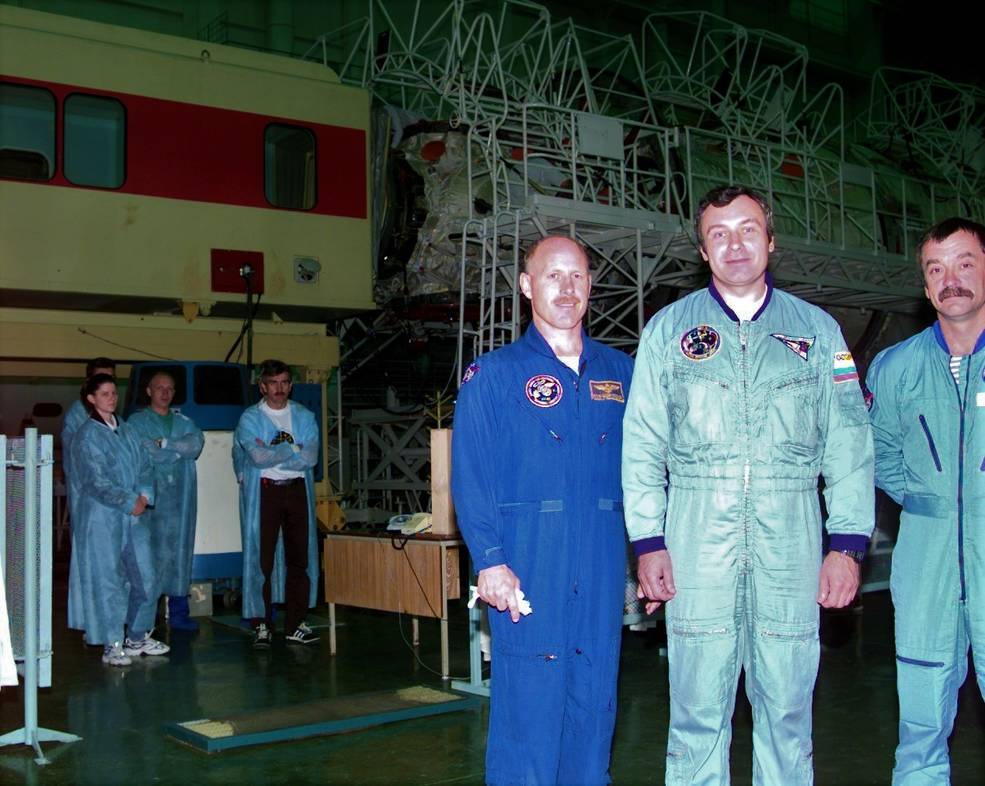
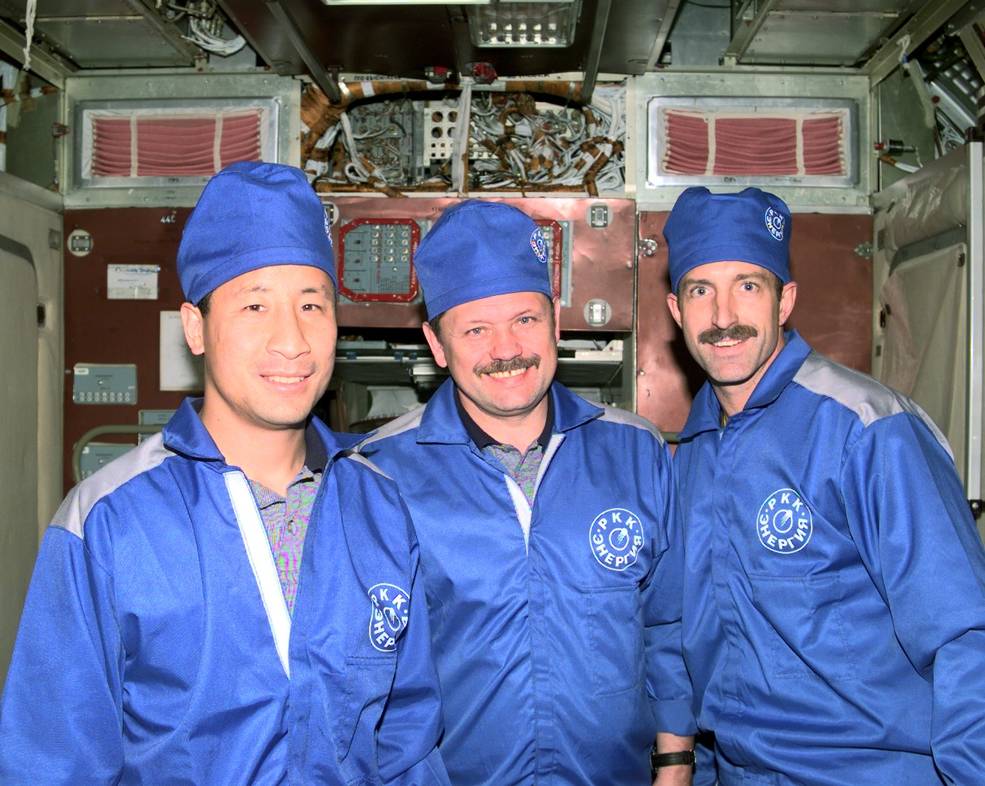
Left: Expedition 1 backup crew (left to right) Bowersox, Dezhurov and Tyurin
at the Zvezda CEIT in Baikonur. Right: STS-106 crewmembers (left to right) Lu,
Morukov and Burbank inside Zvezda during the CEIT at Baikonur.
Back at GCTC, in addition to training on Soyuz spacecraft systems and helping to prepare onboard procedures, crewmembers spent time in the center’s Hydrolab training for EVAs. Wearing EMUs, STS-106 crewmembers Lu, Malenchenko and Burbank practiced for tasks to connect cables between Zvezda and the Zarya Functional Cargo Block and other maintenance activities, with the Expedition 1 crew observing. They had previously rehearsed these activities in both the NBL and the Hydrolab, becoming the first Shuttle crew to train in the Russian facility. American and Russian engineers had certified the use of the US EMU in the Hydrolab between March and May 1999, an activity that according to Lu “required an awful lot of work by a lot of our engineers in order to make … happen.” The EVA by Lu and Malenchenko during STS-106 marked only the second time that an American astronaut and a Russian cosmonaut conducted an EVA together in US EMUs, the first occurring in 1997 during STS-86, the seventh Shuttle-Mir docking mission. Krikalev and Gidzenko completed a Hydrolab run on May 31 to train for external maintenance tasks, and Shepherd and Bowersox would also complete training sessions in June.
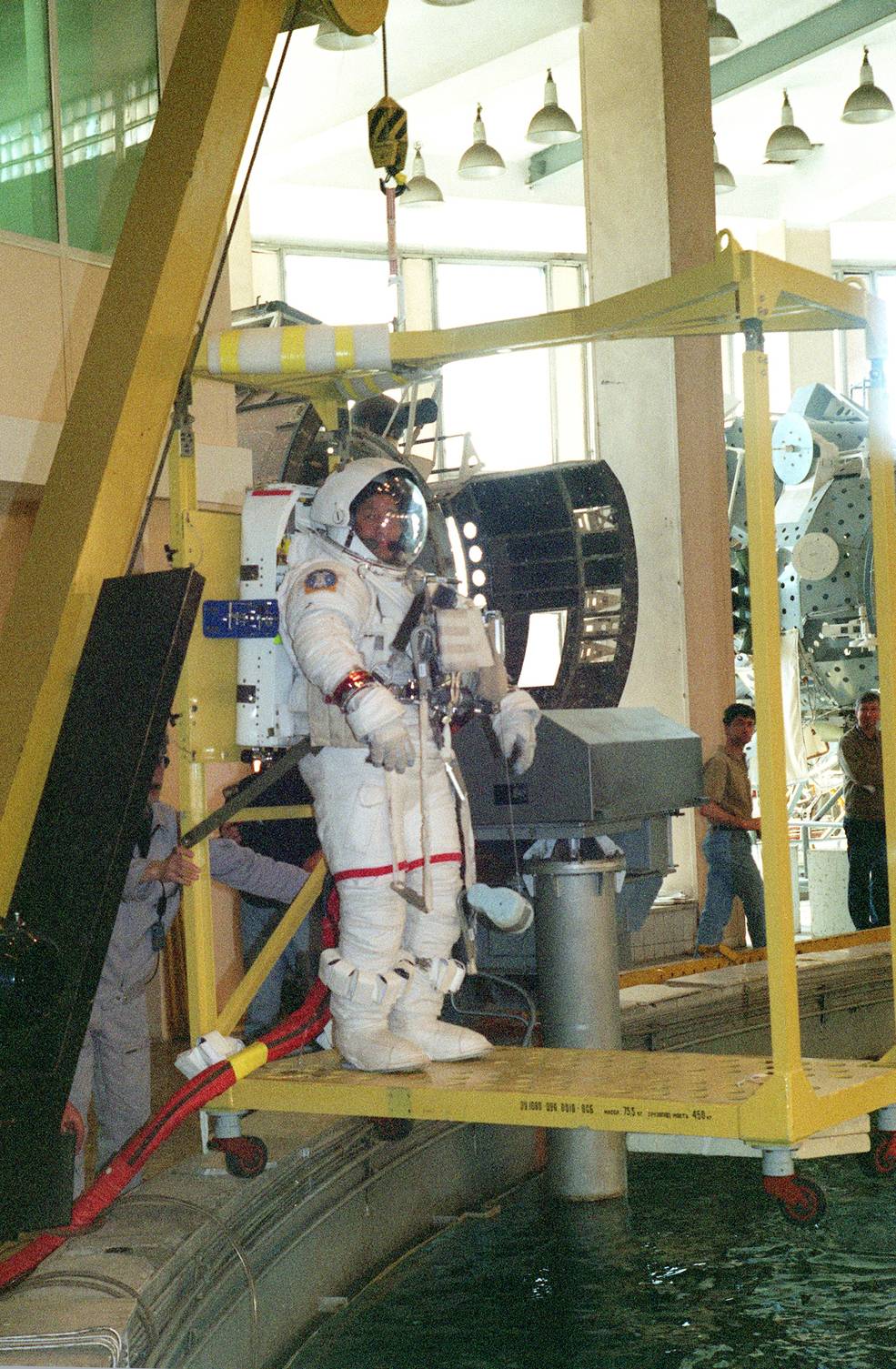
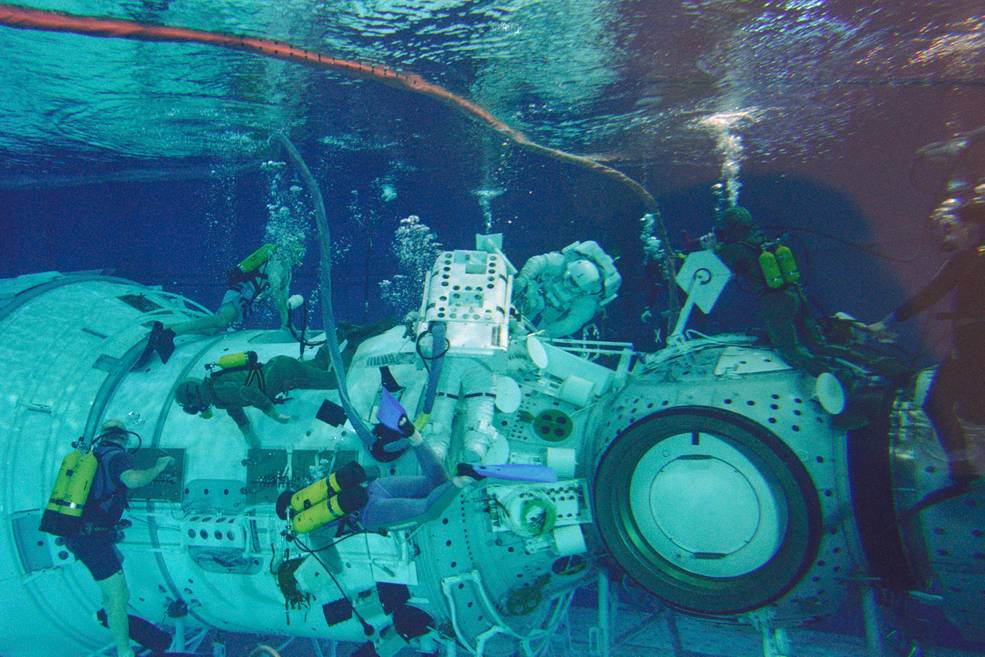
Left: Lu about to be lowered into the water in the Hydrolab facility at GCTC.
Right: Lu (at left) and Malenchenko during an earlier Hydrolab training
session in August 1999, assisted by scuba divers.
Russian engineers were busy not only preparing Zvezda, the module that provided early power, propulsion, life support, communications and living quarters for the station, but also the Proton rocket that lifted into orbit. They successfully completed a four-day vacuum chamber test in early May in Area 254 to ensure the module’s pressure integrity. A Proton rocket had suffered a launch failure in 1999 requiring its recertification before ISS program managers would allow the Zvezda launch to proceed. Engineers at the Khrunichev State Research and Production Space Center in Moscow completed final electrical tests on the rocket intended for Zvezda prior to shipping it to Baikonur on May 28. With the additional time afforded by the Proton rocket recertification, Russian engineers upgraded Zvezda’s software.
To be continued…


























